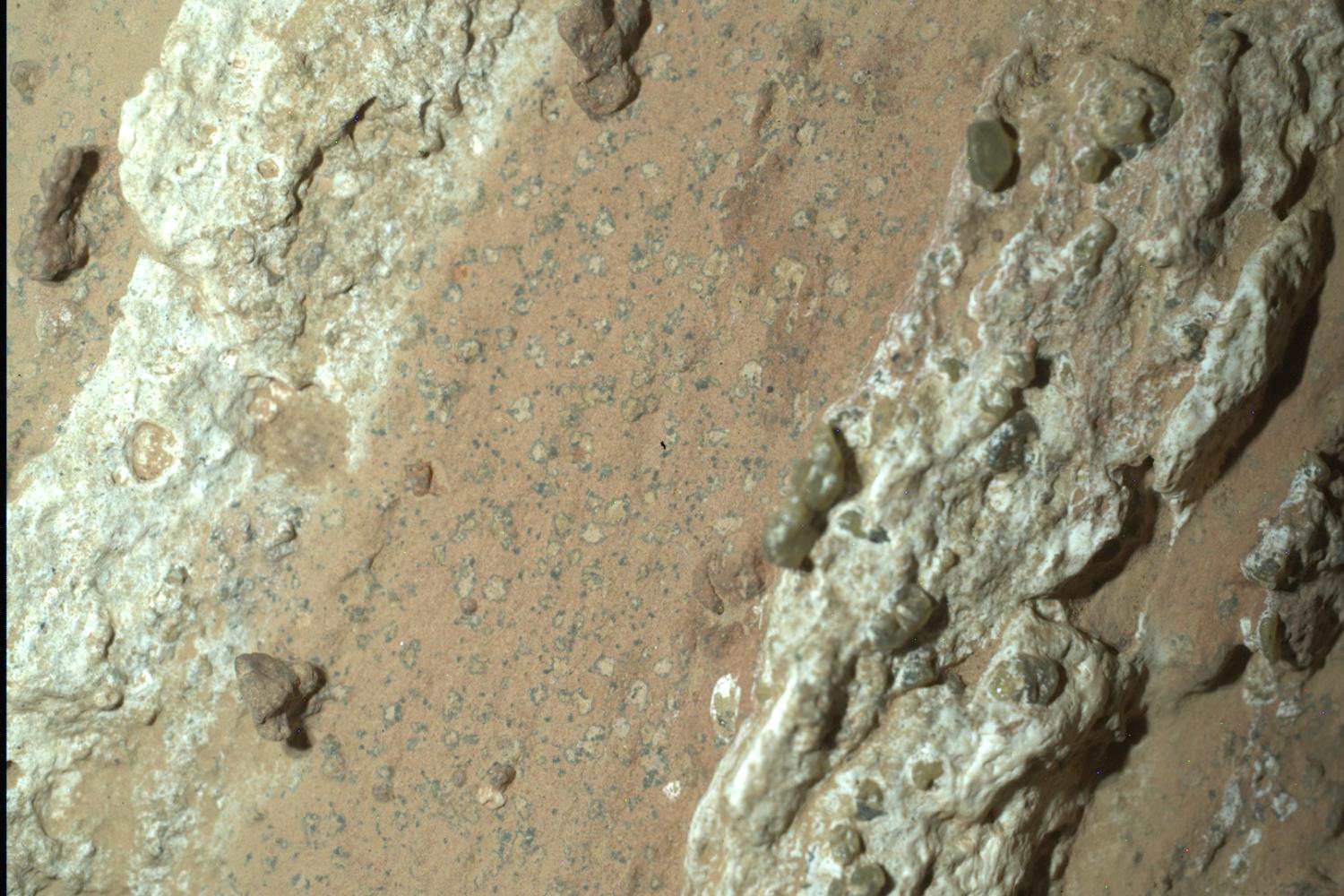NASA has just disseminated a conference dedicated to a discovery of Perseverance, the rover that has been moving March since February 2021 in search of traces of past life; She now thinks she has found biosignatures left by former microorganisms in a sample collected last year.
The announcement of this conference intrigued everyone, because the format was quite unusual. As a rule, the American agency presents the discoveries of its Martian rover in the form of simple blog posts. But this time, several big names in the institution have gathered to inform us of these live novelties, including the acting administrator Sean Duffy, the operational manager Nicky Fox and several high -flying scientists. We could therefore expect major revelations … and that is precisely what happened.
A major discovery in July 2024
It all started in July 2024, when Perseverance reached Neretva Vallis, the main artery 400 meters wide which leads to the Jezero crater delta. It is a particularly interesting area, because it is by this channel that all the water has arrived that transformed the region into a large lake just under four billion years ago. Any discovery in this area is therefore particularly promising, knowing that this precious liquid is intimately linked to life as we know it.
When Perseverance arrived on site, in July 2024, he came across a rocky outcrop which immediately attracted the attention of NASA because of its singular appearance. He notably presented irregular and branched veins which could only have been formed in a Aquatic environment, conducive to the emergence of potential forms of life.
Subscribe to WorldOfSoftware
Rover’s preliminary analyzes have also shown that these veins were made up of sulfate de calcium. It is an extremely stable chemical species, capable of preserving traces of geological processes or biosignatures for billions of years. In other words, it is an invaluable natural archive in the context of life research.
By leaning over these rocks, the rover has also identified many small black dots, comparable to “leopard stains“Or to”poppy grains”. The latter were imprisoned in solidified mud rich in carbon-one of the essential bricks of life as we know it. Perseverance also observed that the grains were particularly loaded with iron and phosphorus. However, on earth, these minerals are often by-products of the metabolism of micro-organisms which consume organic matter.
This is the very first time that Perseverance has found these three elements gathered precisely in the same place, and it makes the sample incredibly promising. NASA even said it was the most Nice discovery since the start of the Mission March 2020 mission ; According to members of the research team, there is a real probability that Martian microorganisms lived there several hundred million years ago.
“We see no other explanation”
However, the agency remained extremely cautious. There are indeed many geological processes which could have theoretically produced structures likely to be taken for biosignatures, without the intervention of living beings. To date, researchers have never managed to eliminate all these alternative tracks; It was therefore impossible to conclude that we were dealing with fossilized traces of biological activity on Mars.
For more than a year, NASA researchers have worked hard to eliminate a maximum of potential tracks vis-à-vis this new sample. And this time, the situation seems different; All the purely geological scenarios mentioned so far have been dismissed one after the other.
“In the past, we thought we had already found traces of past life. But each time there were different possible explanations“Explained Sean Duffy, assistant administrator of the agency.“This time, after a year of analyzes, we see no other explanation.”
Caution remains
Nicky Fox, assistant director of the agency, however insisted that it was not not yet long -awaited final evidence. On the sidelines of the conference, the researchers who led these analyzes also published a long research paper on their investigation. This can be consulted by all other astrobiology specialists. They will then be able to deliver their own interpretation of the results and the methodology, in order to decide whether they adhere to the NASA hypothesis or if they favor another scenario.
Whatever the result, it will be absolutely fascinating to read the feedback from the scientific community on this work. But to obtain a final response, it will undoubtedly be necessary to wait until this invaluable sample can be analyzed directly on earth – and that will not happen before the mission Mars Sample Returnplanned in the 2030s.
You will understand: we are not Not yet immune to disillusionmentbut it is undoubtedly the most promising Martian discovery to date. “” “We have never been so close to discovering traces of spent spent on Mars – we are extremely enthusiastic”Rejoices Nicky Fox.
See you in a few months, when the researchers had time to dissect the new study, for the first elements of response!
🟣 To not miss any news on the Geek newspaper, subscribe to Google News and on our WhatsApp. And if you love us, .











